History lives on Orcas Island
There are very few places in Washington where you can hike through the woods, trip over a 200-year-old cannonball and land amongst an assortment of arrowheads and prehistoric bison fossils. In fact, there’s likely only one place where that amazing scenario could potentially play out, and that is on Orcas Island in the San Juans.
As the largest island in San Juan County, Orcas is surprisingly not named after the famous killer whales that patrol the waters north of Puget Sound. The name “Orcas” is a shortened form of the name “Horcasitas,” or – more specifically – Juan Vicente de Güemes Padilla Horcasitas y Aguayo, 2nd Count of Revillagigedo, the Viceroy of Mexico. He’s the one who sent an expedition led by Francisco de Eliza to the Pacific Northwest in 1791.
Forty years later, the more well-known American expedition led by Charles Wilkes renamed Orcas Island and many of its features. Orcas Island became “Hull Island” after Commodore Isaac Hull, commander of the U.S.S. Constitution – also known as “Old Ironsides” – which captured the British warship Guerriere in the War of 1812. “Ironsides Inlet” eventually was renamed East Sound, “Guerriere Bay” became West Sound, and “Hull Island” was returned to its original name in 1847.
Mount Constitution in Moran State Park, however, with it’s Civilian Conservation Corps tower providing 360-degree views of the San Juan Islands, still retains the Wilkes-applied moniker.
The San Juan Scenic Byway on Orcas Island stretches from Deer Harbor near the western shores to Doe Bay in the east. Because the island looks like overlapped horseshoes, you’re never far from stunning ocean views and miles of beaches to explore.
And speaking of exploration, let’s get back to tripping over cannonballs.
Drop by the Orcas Island Historical Museum in Eastsound and you’ll find a few cannonballs that were discovered just that way. Museum Curator Clark McAbee says long ago, the island – originally thought to be uninhabited – was used for target practice by the various ships that sailed through the archipelago during the exploration years. One of the museum’s cannonballs was even found lodged in a tree, and McAbee says there are likely more out there to be found.
Also scattered around the island are Native American arrowheads, which one Eastsound shopkeeper says can be found by anyone exploring the beaches for a decent amount of time. Since the Lummi Nation once occupied the San Juan Islands, there’s reportedly no shortage of evidence of their presence.
If natural history is your thing, you’re going to love this. In 2003, workers excavating a pond uncovered the fossilized remains of a 14,000 year old animal (see above). Related to the modern-day American bison (whose scientific name is “Bison Bison“), this extinct land mammal turned out to be a larger, ice-age version called Bison Antiquus.
Standing seven feet tall at the shoulders, 15 feet in length and weighing in at just over a ton, Bison Antiquus was likely a formidable force to the giant ground sloths and mammoths that have also been found in the San Juans. It certainly was to the pre-Clovis humans that hunted Bison Antiquus for its meat, as evidenced by tool marks found on the fossil’s bones. The reason that’s important? Clovis people were thought to be the first human occupants of North America, but this particular Bison Antiquus skeleton predated the Clovis by about 800 years.
The relevance of this discovery (and others in the Pacific Northwest that indicate pre-Clovis human activity) is now part of a growing body of evidence contributing to internationally-debated theories about the earliest human migration on our continent. Discover magazine even ranked the Bison Antiquus find tenth on a list of the top 100 worldwide scientific discoveries of 2008.
Between the breathtaking natural beauty, the friendly villages, the abundant wildlife, the uniquely amazing history, and the spectacular beaches, The San Juan Scenic Byway across Orcas Island should be on every Washingtonian’s must-see destination list. Historic dining and accommodation options for the heritage tourist are plentiful, from the Orcas Hotel in Orcas, to the Outlook Inn in Eastsound, to the elegant Rosario Resort and Spa, opened in 1909 by famed Seattle mayor and shipbuilder Robert Moran.
And for the special traveler, the one who wants a more intimate historical experience on Orcas Island, look no further than the unassuming North Beach Inn. Once a farm consisting of several hundred acres, the North Beach property was purchased from the original homesteader in 1911 by James Gibson and has been owned and operated by the Gibson family ever since.
The Gibsons continued the previous owner’s agricultural stewardship of the land with apples, hay fields and livestock. In 1916, they branched out into the hospitality market with the installation of tent-cabins along their third-of-a-mile stretch of private beach. By the 1930s, they had constructed eight private cabins – some atop the original tent-cabin foundations – and a main building modeled after a Scottish hunting lodge. Many of these historic cabins are still in use today, providing guests a glimpse of beach life in the middle of the last century.
Currently being managed by Craig Gibson, a fourth-generation owner, and assisted by his fifth-generation children, the North Beach property offers patrons a chance to retreat from the trappings of modern life. There are no phones in North Beach Inn cabins, and no television or Wi-Fi either. But what they do have are board and card games, free wood for beach fires, lots of books and magazines, and an unbeatable opportunity to while away the hours searching for arrowheads, agates and seashells.
If the season is right, you can take advantage of heritage fruit from one of the farm’s original orchard trees, including five kinds of apples. Imagine being able to pick an apple off of a tree that’s been producing fruit for over a hundred years! There are also two varieties of pear trees, two varieties of cherry trees and a solitary hazelnut tree if any of those are to your liking. The circa 1880s apple-packing barn still stands across from the original owner’s homestead, where several generations of Gibsons were born, lived and died.
And to underscore that the world really is a small place, take note that James Gibson’s brother, Edward, eventually went on to run the property with his wife, Edna. Her maiden name was Hull, and – in a fascinating coincidence – she happened to be descended from the family of the Commander of the U.S.S. Constitution…none other than Commodore Isaac Hull, after whom the island was once named by Charles Wilkes!
Who says history is boring? Check out all the pictures from the trip – including spectacular panoramas like the one below – at our Flickr and Pinterest pages!

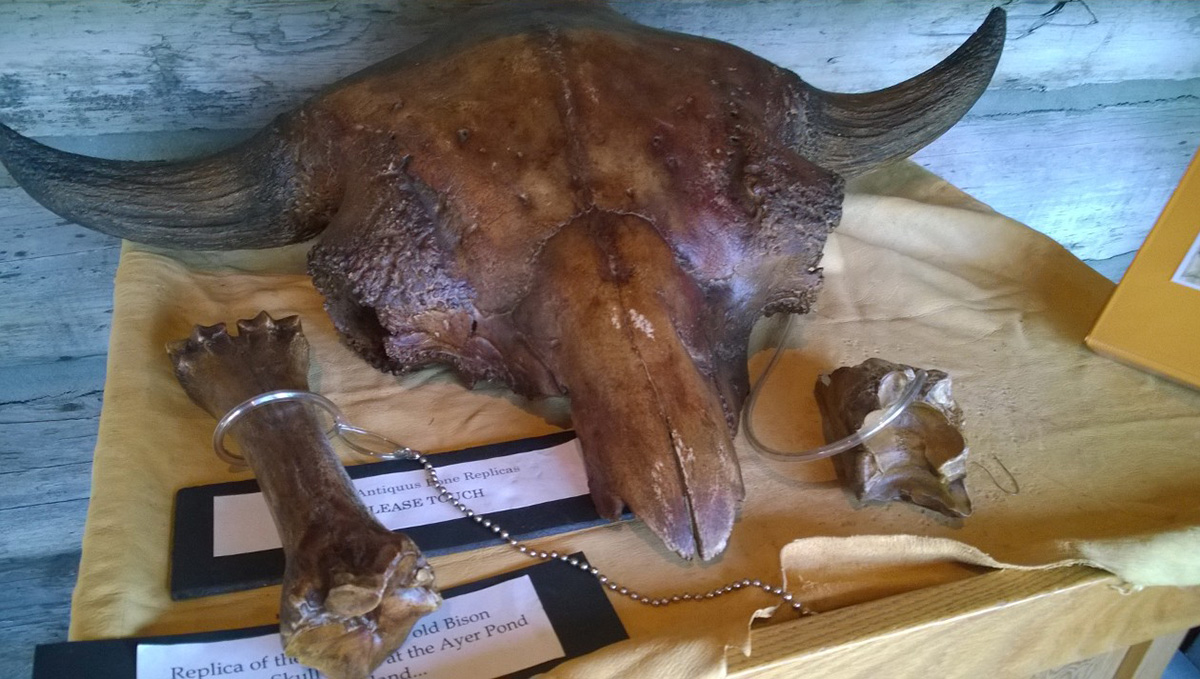
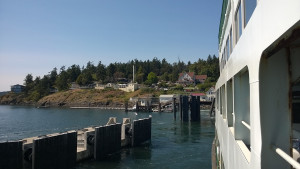
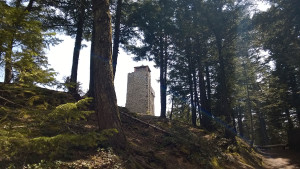
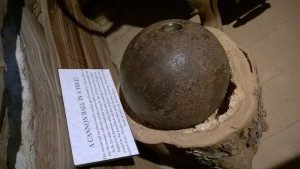
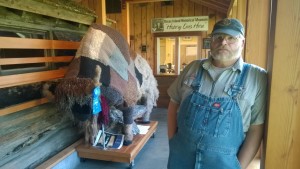
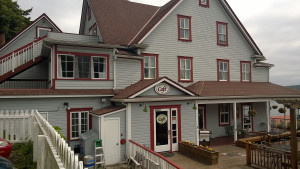
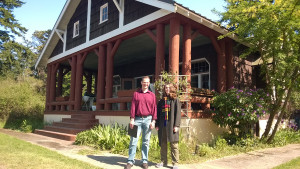
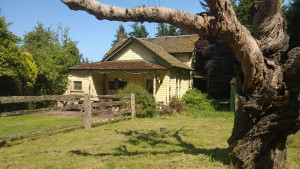

The discovery of the Bison fossil was an exciting moment when we were digging out a swamp/peat bog/wetland in Olga…..there are more to be unearthed but unfortunately the misguided folks in the state / county permit offices now prohibit digging out wetlands/peat bogs/swamps to create lakes or ponds…In the 1950s and 60s the government encouraged the creation of lakes and ponds to enhance the water table ! Too bad…who knows what other fabulous finds would be uncovered if responsibly restoration of wetlands and peat bogs was allowed?
Thank you for reading my article! I had a wonderful time on Orcas Island and can’t wait to get back to discover more.
I’ve not read the book you mentioned, but I’ll keep an eye out for it!
By the way, I took the pictures as well. I’m no professional, but it helps a lot to have nice weather to make the pictures better.
I hope you enjoy reading more of my articles, and thanks again!
Thank you for the wonderful brief history of Orcas Island. My husband, Jim Long, grew up on Orcas and his best friend was Gordon Gibson and he spent many, many hours at North Beach Inn. Thanks for the great photos of the barn, farmhouse, inn, etc. Who was the photographer as the photos are just great.
Have you ready my husband’s book which is featured at Darvills Bookstore? It is called “Another day in Paradise, memories from the 30s and 40s on Orcas Island.” I believe you would enjoy this very personal narrative with many stories of early 30s and 40s. Jim told me he did find a cannon ball when he was a kid down by North Beach but left it there and never returned to find it again. Thanks again for the great feature and waiting for the next one.